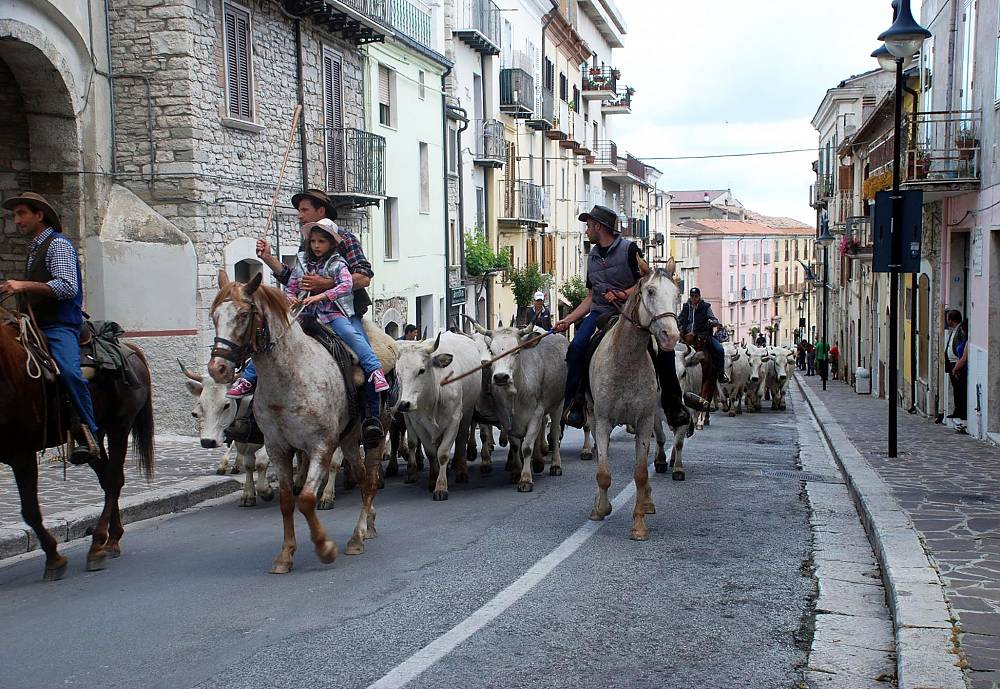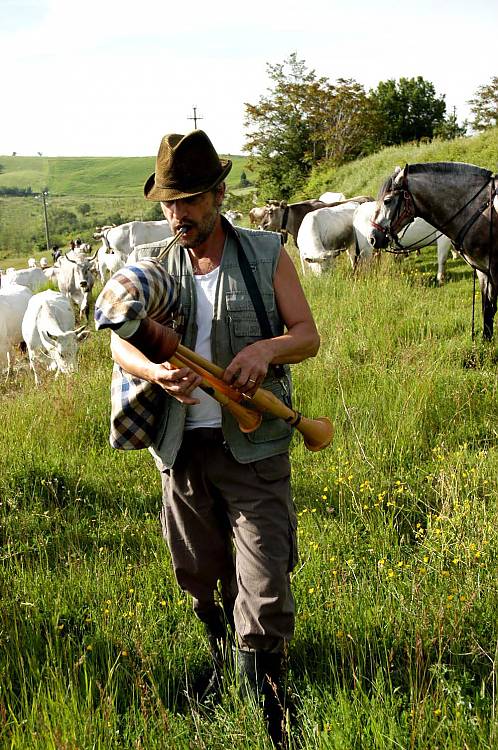Transumance, the seasonal droving of livestock along migratory routes in the Mediterranean and in the Alps
Inscribed in 2019 (14.COM) on the Representative List of the Intangible Cultural Heritage of Humanity
1.1 Description of the element
Transhumance, the seasonal droving of livestock along migratory routes in the Mediterranean and the Alps, is a form of pastoralism. Every year in spring and autumn, thousands of animals are driven by groups of herders together with their dogs and horses along steady routes between two geographical and climatic regions, from dawn to dusk. In many cases, the herders’ families also travel with the livestock. Two broad types of transhumance can be distinguished: horizontal transhumance, in plain or plateau regions; and vertical transhumance, typically in mountain regions. Transhumance shapes relations among people, animals and ecosystems. It involves shared rituals and social practices, caring for and breeding animals, managing land, forests and water resources, and dealing with natural hazards. Transhumant herders have in-depth knowledge of the environment, ecological balance and climate change, as this is one of the most sustainable, efficient livestock farming methods. They also possess special skills related to all kinds of handicraft and food production involved. Festivities during springtime and autumn mark the beginning and end of transhumance, when bearers share food, rituals and stories and introduce younger generations to the practice. Chief herders pass on their specific know-how to the younger generations through daily activities, ensuring the continued viability of the practice.
1.2 Geographical location and Range of the element:
Austria, Greece and Italy
The element focuses on the practice of communities from the following geographical locations: Alpine region (North of Italy and Austria); Centre and South of Italy; Greece.
In the Alpine Region, transhumance is practiced by shepherds in Lombardia Region in Italy and in the Ötztaler Alpen/Alpi Venoste (a mountain range in Central Alps). Here there is a traditional journey starting in Italy from Val Senales/Schnalstal valley and Val Passiria/Passeier valley: people and animals are driven over the mountain passes of Timmelsjoch/Passo Rombo (2494m), Hochjoch (2885m), and Niederjoch (3017m) to their allocated summer pastures in the Ötztal valley in Austria.
In Central and South of Italy the element is present in Regions Lazio, Abruzzo, Molise, Campania, Apulia, Basilicata and Sardinia. The element plays a key-role particularly for communities located in Amatrice, whose historical centre was distructed by recent earthquake on 2016, and Ceccano (Lazio); Aversa degli Abruzzi and Pescocostanzo (Abruzzo); Frosolone (Molise); San Marco in Lamis, San Giovanni Rotondo and Monte Sant’Angelo (Apulia); Rivello (Basilicata); Lacedonia and Zungoli (Campania).
In mainland Greece migrating goat and sheep flocks can be found everywhere. Moreover, they appear in large and medium-sized islands, mainly on Crete and Eubœa, but also Chios, Naxos, Thassos, etc. The focus of migrating livestock farming remains in the Thessaly Region till this day, where the majority of the bearers reside. Transhumance is also eminent in the Central Greece and the Peloponnese Regions.
Nonetheless Transhumance is widespread around the world and has been developed by various communities on all continents. It is often found in alpine regions and marginalised and/or ecologically unbalanced areas.
1.3 Domain(s) of the element:
Domain(s) of the element as intangible cultural heritage identified according to the Article 2.2 of the Convention:
- oral traditions and expressions, including language as a vehicle of the intangible cultural heritage
- performing arts
- social practices, rituals and festive events
- knowledge and practices concerning nature and the universe
- traditional craftsmanship
- other(s)
Evaluation Body Decision
Inscription: 14.COM 10.b.2





